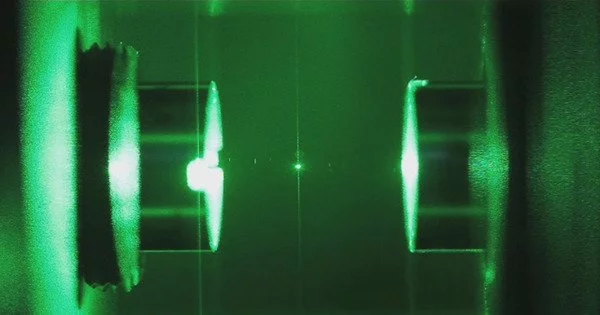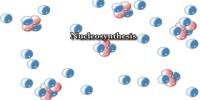An optical cavity, also known as a resonating cavity or optical resonator, is a mirror or other optical element arrangement that forms a cavity resonator for light waves. It is a device that confines light within a defined space to improve certain optical properties. It is made up of two or more highly reflective mirrors or reflectors that are joined together to form a closed loop or cavity. These mirrors are arranged so that light can bounce back and forth between them, resulting in a standing wave pattern.
Optical cavities are an important part of lasers because they surround the gain medium and provide feedback of the laser light. They are also employed in optical parametric oscillators and certain interferometers. Light confined within the cavity reflects multiple times, resulting in modes with specific resonance frequencies. Modes can be divided into longitudinal modes, which differ only in frequency, and transverse modes, which have different intensity patterns across the beam’s cross-section. Standing wave modes are produced by many different types of optical cavities.
The basic principle of an optical cavity is that constructive interference occurs when the distance between the mirrors is an integer multiple of the wavelength of light, resulting in the reinforcement of the light wave. This phenomenon enables the cavity to accumulate and amplify the intensity of light at specific wavelengths while suppressing light at others.
The focal lengths of the two mirrors and the distance between them distinguish different resonator types. Flat mirrors are rarely used because they are difficult to align to the required precision. The geometry (resonator type) must be chosen in such a way that the beam remains stable, i.e. the size of the beam does not increase with multiple reflections. Other criteria, such as having a minimum beam waist or no focal point (and thus intense light at that point) inside the cavity, are also met by resonator types.
The optical cavity is an essential component in various applications, including lasers, optical filters, and optical resonators. Some key features and applications of optical cavities are as follows:
- Laser Resonators: Laser optical cavities are critical components. The cavity’s mirrors are carefully designed to reflect and amplify light, resulting in a coherent and intense beam of light. The cavity aids in the establishment of the desired optical mode and the control of the laser’s emission characteristics.
- Frequency Selective Filters: An optical cavity can be designed to transmit or reflect specific wavelengths of light by adjusting the spacing and reflectivity of the mirrors. This property is used in a variety of devices, including wavelength division multiplexing (WDM) filters in fiber-optic communication systems.
- Mode Control: Optical cavities can be designed to support specific resonant modes, such as transverse modes in lasers. By controlling the mode structure within the cavity, it is possible to tailor the spatial and spectral properties of the light.
- Enhanced Light-Matter Interactions: Light confinement within an optical cavity improves the interaction of light and matter. This is used in a variety of applications, including cavity quantum electrodynamics (cavity QED) experiments and strong light-matter coupling studies.
- Sensing and Metrology: Precision measurement techniques such as optical interferometry and cavity-enhanced spectroscopy make use of optical cavities. External factors can modulate the cavity length, allowing for highly sensitive measurements of length changes. This is used in devices such as gravitational wave detectors.
Overall, optical cavities play a crucial role in controlling and manipulating light, enabling a wide range of applications in various fields of science, technology, and industry.
















